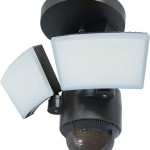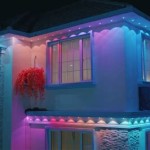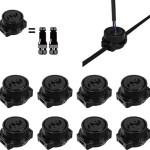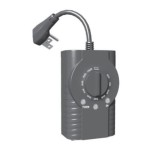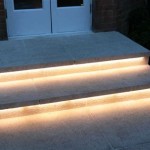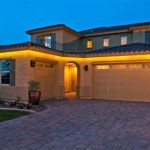How to Make a Propane Outdoor Fireplace
An outdoor fireplace provides warmth, ambiance, and a focal point for outdoor gatherings. While traditional wood-burning fireplaces are an option, propane fireplaces offer several advantages, including ease of use, cleaner burning, and reduced smoke. Constructing a propane outdoor fireplace is a manageable project for the average homeowner with some basic construction knowledge and tools. This article provides a detailed guide to building a safe and functional propane outdoor fireplace.
Planning and Design Considerations
Before commencing any construction, a comprehensive plan is essential. This includes selecting a suitable location, determining the desired size and style of the fireplace, and ensuring compliance with local building codes and regulations. Neglecting these initial steps can lead to costly revisions or safety hazards later in the process.
Location: The choice of location is paramount. The fireplace should be situated away from flammable materials such as trees, bushes, and overhanging structures. Consider wind direction and prevailing breezes to minimize smoke and ember drift toward the house or neighboring properties. Adequate ventilation is crucial for propane fireplaces to prevent the accumulation of gas. Furthermore, ensure the location is accessible for propane tank refills or exchanges. Check for underground utilities before digging to avoid damaging gas lines, water pipes, or electrical cables. Contact the local utility company for marking of underground lines.
Size and Style: The dimensions of the fireplace should be proportionate to the surrounding outdoor space. A large fireplace in a small yard may appear overwhelming, while a small fireplace in a vast area might seem insignificant. Consider the intended use of the fireplace when determining its size. If it's primarily for ambiance, a smaller design may suffice. If it's intended for cooking or frequent gatherings, a larger fire pit or fireplace may be more appropriate. The aesthetic style of the fireplace should complement the existing outdoor décor. Options range from rustic stone fireplaces to modern, minimalist designs. Sketching out different design ideas can help visualize the final product.
Building Codes and Regulations: Before beginning construction, it is critical to consult with the local building department to understand the applicable codes and regulations. These may include requirements for setbacks from property lines, height restrictions, and specific construction methods. Some jurisdictions may require permits for outdoor fireplaces, particularly those using gas. Failure to comply with building codes can result in fines, delays, or even the need to dismantle the completed structure. Propane-specific regulations should be reviewed carefully, regarding tank placement and gas line installation.
Materials and Tools Required
The materials needed to build a propane outdoor fireplace will vary depending on the design and style. However, some essential materials and tools are universally required. Careful material selection ensures both durability and aesthetic appeal.
Materials: The primary materials include concrete blocks or bricks for the fireplace structure, mortar to bind the blocks together, fire bricks to line the firebox, a propane burner kit specifically designed for outdoor fireplaces, a propane tank, a gas regulator and connecting hoses, gravel for drainage, and decorative stone or veneer for the exterior finish. The propane burner kit should be certified by a recognized testing laboratory, such as CSA or UL. Verify that the regulator is compatible with the propane tank and burner. Purchase sufficient fire brick to adequately protect the structure from the heat of the flame, typically covering all interior surfaces within the firebox.
Tools: The necessary tools include a shovel for excavation, a level for ensuring the structure is plumb and square, a trowel for applying mortar, a hammer for shaping bricks or blocks, a concrete mixer or wheelbarrow for mixing mortar, safety glasses and gloves for protection, a measuring tape for accurate measurements, and a pipe wrench for connecting gas lines. A masonry saw may be required for cutting blocks or bricks to size. Rent or purchase these specialized tools to ensure clean accurate cuts. A propane leak detector spray is also crucial for safety.
Construction Process
The construction process involves several stages, including site preparation, laying the foundation, building the fireplace structure, installing the propane burner, and finishing the exterior. Accurate execution of each stage is crucial for a structurally sound and aesthetically pleasing fireplace.
Site Preparation and Foundation: Begin by excavating the area for the fireplace foundation. The depth of the excavation should be determined based on local frost line requirements to prevent shifting due to freezing and thawing. Pour a concrete foundation that extends beyond the footprint of the fireplace structure. Ensure the foundation is level and allow it to cure completely before proceeding. Proper curing requires keeping the concrete moist for several days. This can be accomplished by covering it with plastic sheeting or spraying it with water regularly. The foundation must be strong enough to support the weight of the fireplace.
Building the Fireplace Structure: Once the foundation is cured, begin laying the first course of concrete blocks or bricks. Use mortar to bind the blocks together, ensuring each block is level and plumb. Stagger the joints between each course for added strength. As the walls rise, incorporate fire bricks to line the firebox. Pay close attention to the dimensions specified in the design plans. Leave an opening for the propane gas line to enter the firebox. Consider adding a chimney or vent to allow for proper airflow and reduce smoke. The height of the chimney should be adequate to draw smoke away from the seating area. Regularly check the alignment of the walls with a level and plumb bob to prevent leaning.
Installing the Propane Burner: After the fireplace structure is complete, install the propane burner according to the manufacturer’s instructions. Connect the gas line to the burner using appropriate fittings and sealant. Ensure all connections are tight and leak-free. Use a propane leak detector spray to check for leaks at all joints. Place gravel around the burner to provide drainage and prevent water from accumulating in the firebox. Arrange decorative rocks or lava rocks around the burner to conceal it and enhance the appearance of the fireplace. Test the burner to ensure it ignites properly and produces a consistent flame.
Exterior Finishing: The final step is to apply the desired exterior finish to the fireplace. This can include decorative stone, brick veneer, stucco, or other materials. Apply the chosen finish according to the manufacturer’s instructions. Ensure the finish is securely attached to the underlying structure. Consider adding a capstone to the top of the fireplace to protect it from the elements. Clean up any debris and landscaping around the fireplace to create a welcoming outdoor space. Apply a sealant to the exterior finish to protect it from weathering and staining.
Safety Considerations
Safety is paramount when building and using a propane outdoor fireplace. Strict adherence to safety guidelines minimizes the risk of accidents and ensures a safe and enjoyable experience.
Gas Line Installation: Proper gas line installation is critical. Use only approved gas-rated pipes and fittings. Consult with a qualified gas technician if unsure about any aspect of the installation process. Ensure the gas line is buried at the appropriate depth to protect it from damage. Mark the location of the gas line with warning tape to prevent accidental digging. Perform a thorough leak test after completing the gas line connection. Never use an open flame to check for leaks; instead, use a propane leak detector spray. Regularly inspect the gas line for signs of damage or corrosion.
Ventilation: Adequate ventilation is essential to prevent the accumulation of propane gas. Ensure the fireplace has sufficient openings to allow for airflow. Do not enclose the fireplace in a confined space without proper ventilation. Be mindful of wind direction and prevailing breezes to prevent gas from accumulating near the house or other structures. Carbon monoxide detectors should be installed in nearby buildings as an additional safety measure.
Safe Operating Procedures: Always follow the manufacturer’s instructions for operating the propane burner. Never leave the fireplace unattended while it is burning. Keep children and pets away from the fireplace. Use a fire extinguisher specifically designed for propane fires. Store propane tanks in a well-ventilated area away from heat sources and direct sunlight. Regularly inspect the burner and gas line for damage or wear. If any problems are detected, discontinue use and consult with a qualified technician. Educate all users on the proper operating procedures and safety precautions.

How To Build A Gas Fire Pit Woodlanddirect Com

Diy Outdoor Fire Table Hamilton Park Home

Diy Outdoor Fire Table Hamilton Park Home

How To Make An Outdoor Gas Fireplace With Diy Pete

How To Build An Outdoor Fireplace

How To Plan For Building An Outdoor Fireplace

9 Outdoor Fireplace Design Ideas The Family Handyman

Outdoor Fireplace Kits Your 1 Dealer

Hugedomains Com Outdoor Fire Pit Designs Diy

Backyard Fire Pits The Ultimate Guide To Safe Design Sizing And Construction
Related Posts
